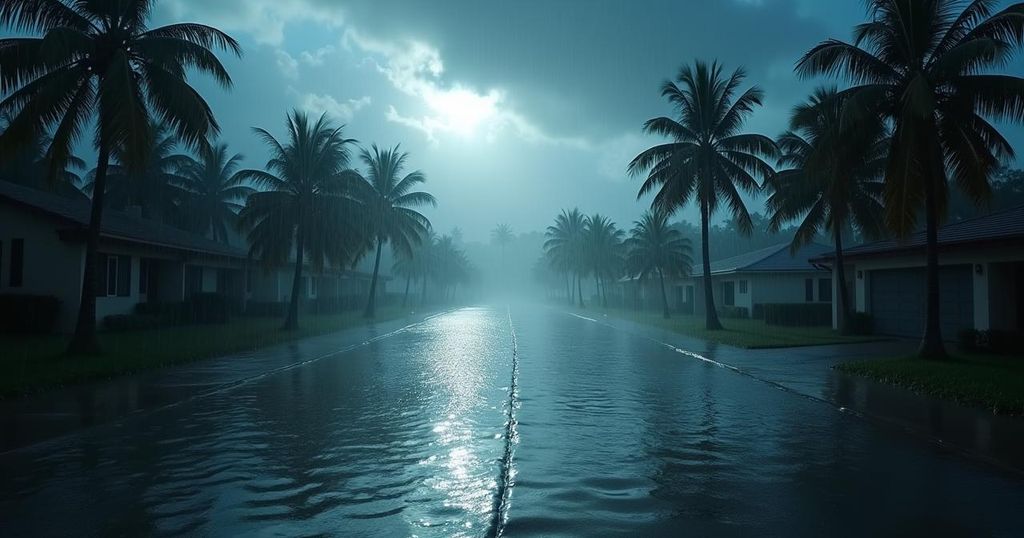Hurricane Helene, a Category 4 storm, made landfall in Florida’s Big Bend on September 27, 2024, triggering substantial rainfall and flooding across southern Appalachia and parts of the southeastern United States. A total of 13.98 inches of rain fell in Asheville, North Carolina, contributing to widespread power outages and evacuations. The storm’s rainfall pattern was influenced by a frontal boundary, resulting in significant precipitation west of its center, particularly around Apalachicola. NASA’s response teams have been activated to assist recovery efforts.
On September 27, 2024, at 11:10 p.m. Eastern Time, Hurricane Helene made landfall in Florida’s Big Bend region as a Category 4 storm. Even prior to landfall, the storm had already begun delivering significant rainfall across the southeastern United States, primarily affecting southern Appalachia from September 25 onward. The intense precipitation led to severe flooding in eastern Tennessee, western Virginia, and North Carolina, among other states. The rainfall accumulation data for the three days leading up to 7:59 p.m. Eastern Time on September 27 reflect these dire conditions. Utilizing remotely sensed estimates from the Integrated Multi-Satellite Retrievals for Global Precipitation Measurement (GPM), this data revealed that Asheville, North Carolina recorded an alarming 13.98 inches (35.52 centimeters) of rain. This rainfall caused extensive flooding, damaging infrastructure, causing landslides, disrupting power and communication services, and necessitating evacuations to temporary shelters. The state witnessed record flood levels on several rivers, and areas in Georgia, South Carolina, Tennessee, and Virginia experienced rainfall exceeding 10 inches (25 centimeters). Interestingly, while hurricanes typically bring heavy rainfall to the eastern side of the storm’s center, Helene’s unique interaction with a frontal boundary over the Florida Panhandle caused the heaviest rain to fall west of its center, particularly around Apalachicola. This phenomenon was noted by research meteorologist Steve Lang from NASA’s Goddard Space Flight Center. Moreover, other regions in Florida also experienced flooding due to storm surge, despite receiving less rainfall. In response to the devastation, the NASA Disasters Response Coordination System has been activated, coordinating with FEMA and the Florida Division of Emergency Management to assist affected areas. The system is committed to providing continual updates, including maps and data related to flooding, power outages, and precipitation levels through an open-access mapping portal.
Hurricane Helene, which made landfall in September 2024, was a significant weather event that resulted in widespread destructive flooding across the southeastern United States. This hurricane not only caused extensive rainfall but also interacted with existing meteorological conditions that intensified its effects. Understanding the events leading up to Hurricane Helene and its aftermath offers insights into the impact of such storms on communities and the environment. Heavy rainfall resulting from hurricanes can lead to severe consequences, including infrastructure damage, loss of power, and disruption of services, necessitating emergency responses and support from federal and local agencies.
The impact of Hurricane Helene serves as a stark reminder of the destructive power of natural disasters. The hurricane’s heavy rainfall led to significant flooding and widespread disruption across multiple states, particularly in southern Appalachia. The unique meteorological interactions that influenced rainfall distribution also highlight the complexities of hurricane behavior. As communities begin to recover, continued support and resources from agencies are crucial in addressing the aftermath of such catastrophic events.
Original Source: earthobservatory.nasa.gov







